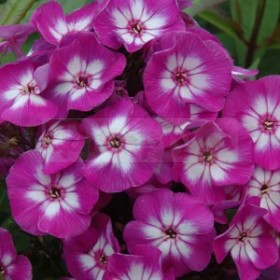 Phloxes is a garden classic for generations. They easily take root in any conditions, are unpretentious and do not require special attention to themselves.
Phloxes is a garden classic for generations. They easily take root in any conditions, are unpretentious and do not require special attention to themselves.
Content:
- how to grow annual phlox from seeds
- when to prune phlox in autumn
- how to cut phlox
- how long do phloxes bloom
How to grow annual phlox
Annuals phloxes are distinguished by a variety of colors. They come in blue, light blue, white, pink, beige, peach and even chocolate, and perennial can boast only pink and raspberry shades. One more peculiarity annual phlox are interesting flowers, they look like a snowflake.
How to grow phlox from seeds?
Online stores can buy seeds
Basic rules of care

- The best time for planting – April – early May.
- Find a place where the soil well drained. Phloxes do not grow well and develop in those areas where the soil is damp. If there are puddles for 5-6 hours after heavy rain, choose another place. Or “change the soil” by adding organic materials such as peat moss, compost or well-rotted manure (pre-treat it to a depth of 30 cm). Good alternative – Raised beds. The soil should be moderately moist. Excess moisture or lack of it is the same harmful.
- Phlox – sun and thermophilic plants. Therefore, choose a landing site where they will be in full sun. Partial shade is also acceptable.
- It is forbidden plant near fruit trees and shrubs.
- Distance when landing for undersized phloxes – 35-40 cm, for tall ones – 50-57 cm. Good receive soil around the roots.
- After planting, seedlings generously water it.
- Periodically water plants during the growing season. Keep in mind that deep watering is better 1-2 times a week than lighter watering daily or every other day. Avoid watering at night, which can promote favorable conditions for mold.
- Blooming phlox do not be afraid cutting down for bouquets. This will not harm the plants, but on the contrary, it prolongs the flowering period.
- Timely delete faded inflorescences.
- loosen the ground under the bushes.
- Tall varieties need support.
- Dwarf varieties Ideal for borders and containers. They look good against the background of variegated leaves of perennials such as geyhera and hostas. Tall and perennial phlox get along with almost all perennials: delphiniums, pyrethrums, bluebells, leucanthemum, aquilegia, carnations, lychnis, etc.
When to prune phlox in autumn

perennial varieties must be pruned for the winter. Phloxes are considered a frost-resistant plant, but in snowless winters, unfortunately, they may die. Also, plants are pruned in order to help the plant accumulate useful material in the root system. If you do not want to lose plants due to fungal diseases, then be sure to prune, because in the fall, harmful fungi actively begin to multiply. In the spring you will see new shootsthat will be distinguished by beauty and health!
pruned phloxes in autumn, it all depends on which region you live in. Optimal period end of September and beginning of October. By this time, all varieties are already will fadeand the nutrients will go to the root. Succeed pruned before the permanent cold sets in. The deadline is early November.
How to prune phlox in autumn
Autumn pruning can be divided into three stages: directly pruning, fertilizing, as well as mulching the soil. Plants pruned
Published: 07.10.2016
